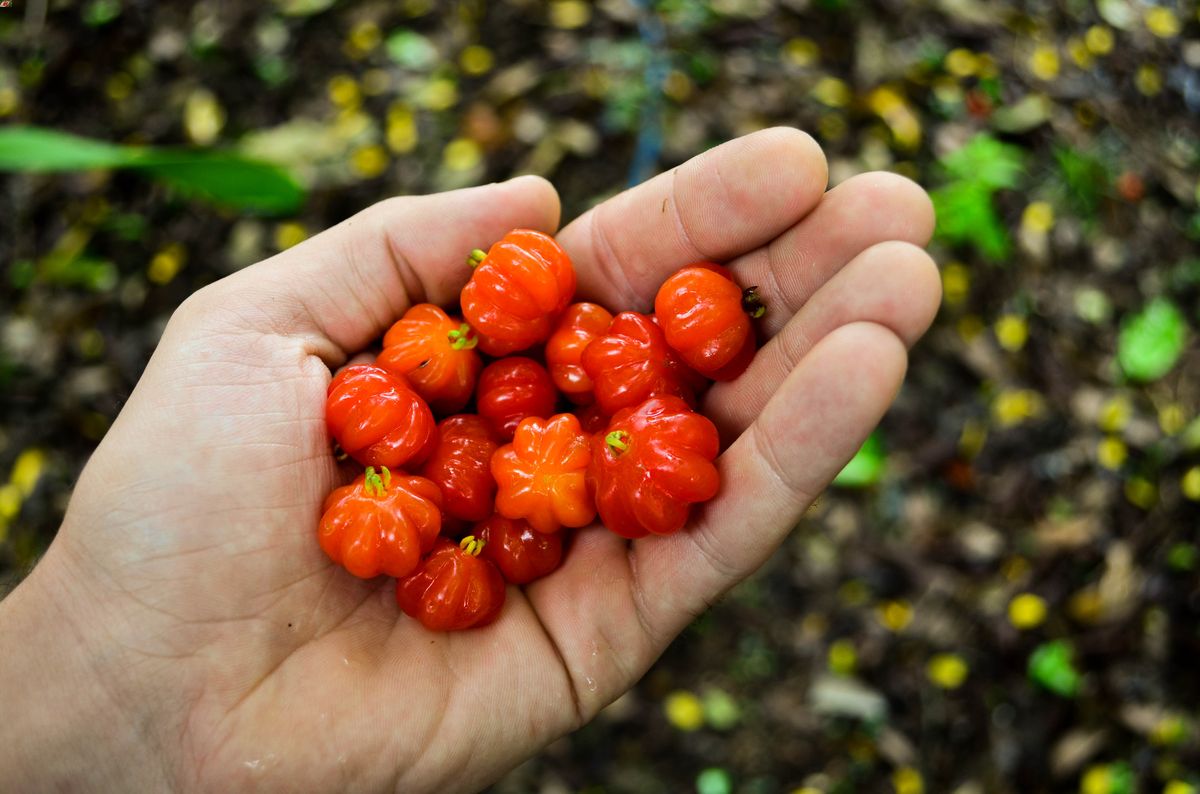
Pitanga, also known as Surinam cherry, is a small, vibrant fruit native to South America. This tropical gem boasts a unique flavor profile, blending sweet and tart notes. But what makes Pitanga so special? For starters, it’s packed with vitamins A and C, making it a nutritious addition to any diet. The fruit’s bright red or deep purple hue isn’t just eye-catching; it’s a sign of its rich antioxidant content. Did you know that Pitanga leaves are used in traditional medicine to treat various ailments? From boosting immunity to improving skin health, this fruit offers numerous benefits. Curious about its uses? Pitanga can be enjoyed fresh, made into jams, or even used in beverages. Whether you’re a fruit enthusiast or just looking to try something new, Pitanga is worth exploring.
What is Pitanga?
Pitanga, also known as Surinam cherry, is a tropical fruit native to South America. This small, vibrant fruit is packed with flavor and nutrients. Let's dive into some fascinating facts about this unique fruit.
Pitanga's Origin and Distribution
Pitanga has an interesting history and geographical spread. Here are some key points about its origin and distribution:
- Native to South America: Pitanga originates from the tropical regions of South America, particularly Brazil, Paraguay, and Uruguay.
- Spread to Other Regions: The fruit has spread to other tropical and subtropical regions, including the Caribbean, parts of Central America, and even Florida in the United States.
- Adaptability: Pitanga trees are highly adaptable and can grow in various soil types, making them popular in many regions.
Physical Characteristics of Pitanga
The appearance and structure of Pitanga are quite distinctive. Here are some facts about its physical characteristics:
- Bright Colors: Pitanga fruits can be bright red, orange, or even dark purple when ripe.
- Unique Shape: The fruit has a ribbed, pumpkin-like shape, which makes it easily recognizable.
- Small Size: Typically, Pitanga fruits are small, about the size of a cherry, hence the name Surinam cherry.
Nutritional Benefits of Pitanga
Pitanga is not just tasty but also packed with nutrients. Here are some nutritional benefits:
- Rich in Vitamin C: Pitanga is an excellent source of vitamin C, which is essential for a healthy immune system.
- Antioxidants: The fruit contains antioxidants that help fight free radicals in the body.
- Low in Calories: Pitanga is low in calories, making it a great snack for those watching their weight.
- Fiber Content: It is also a good source of dietary fiber, which aids in digestion.
Culinary Uses of Pitanga
Pitanga can be used in various culinary applications. Here are some ways it is enjoyed:
- Eaten Fresh: Many people enjoy eating Pitanga fresh off the tree.
- Juices and Smoothies: The fruit can be blended into juices and smoothies for a refreshing drink.
- Jams and Jellies: Pitanga is often used to make delicious jams and jellies.
- Desserts: It can be incorporated into desserts like pies and tarts.
Medicinal Uses of Pitanga
Beyond its nutritional value, Pitanga has several medicinal uses. Here are some examples:
- Traditional Medicine: In traditional medicine, Pitanga leaves are used to treat various ailments, including digestive issues and respiratory problems.
- Anti-inflammatory Properties: The fruit and leaves have anti-inflammatory properties that can help reduce swelling and pain.
- Antimicrobial Effects: Studies have shown that Pitanga has antimicrobial effects, making it useful in fighting infections.
Growing Pitanga
Interested in growing your own Pitanga tree? Here are some tips:
- Climate Requirements: Pitanga thrives in tropical and subtropical climates.
- Soil Preferences: The tree prefers well-drained soil but can adapt to various soil types.
- Sunlight: It requires full sunlight for optimal growth.
- Watering: Regular watering is essential, especially during dry periods.
Interesting Facts About Pitanga
Here are some additional fun and interesting facts about Pitanga:
- Multiple Names: Besides Surinam cherry, Pitanga is also known as Brazilian cherry and Cayenne cherry.
- Bird Magnet: The fruit is a favorite among birds, which helps in seed dispersal.
- Ornamental Use: Due to its attractive appearance, Pitanga is often used as an ornamental plant in gardens.
- Longevity: Pitanga trees can live for several decades, providing fruit year after year.
- Cultural Significance: In Brazil, Pitanga is a symbol of love and is often used in traditional ceremonies.
Pitanga in Popular Culture
Pitanga has made its mark in popular culture as well. Here are some examples:
- Featured in Literature: The fruit is mentioned in various South American literary works, symbolizing beauty and abundance.
- Culinary Shows: Pitanga has been featured in several culinary shows, highlighting its versatility and unique flavor.
Pitanga's Hidden Gems
Pitanga, also known as Surinam cherry, is more than just a pretty fruit. Packed with vitamin C, antioxidants, and anti-inflammatory properties, it’s a powerhouse for your health. Its unique flavor, a mix of sweet and tart, makes it a favorite in jams, jellies, and even cocktails.
This fruit isn't just tasty; it’s also versatile. You can use it in desserts, salads, and sauces. Plus, the leaves have medicinal uses, like treating colds and stomach issues.
Growing pitanga is relatively easy. It thrives in tropical climates and can be grown in pots or gardens. Whether you’re a foodie, a gardener, or someone who loves natural remedies, pitanga offers something special.
So next time you see this bright red fruit, give it a try. You might just find a new favorite!
Was this page helpful?
Our commitment to delivering trustworthy and engaging content is at the heart of what we do. Each fact on our site is contributed by real users like you, bringing a wealth of diverse insights and information. To ensure the highest standards of accuracy and reliability, our dedicated editors meticulously review each submission. This process guarantees that the facts we share are not only fascinating but also credible. Trust in our commitment to quality and authenticity as you explore and learn with us.
